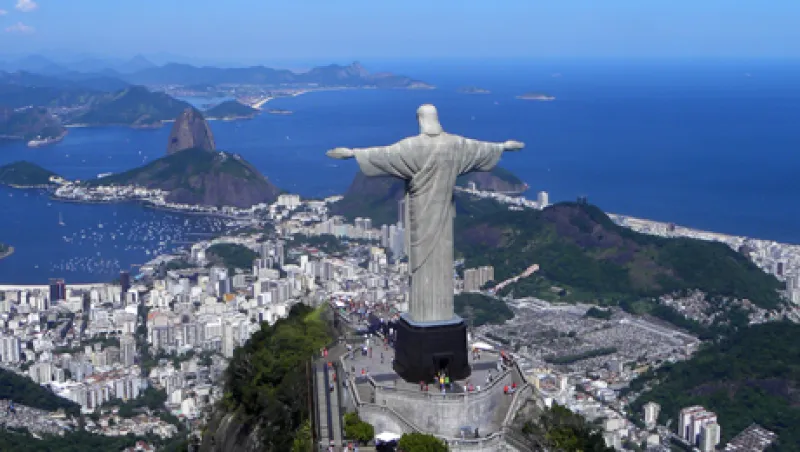After one of the worst runs for an emerging-markets currency in 2011, the Brazilian real has surged 5.5 percent this year. The question facing currency traders is whether the run can be sustained or government action will bring the surge to a quick end.
Mike Moran, emerging-markets currency strategist at Standard Chartered Bank in New York, believes that the real will continue to climb throughout the year. He believes the main driver is foreign flows into Brazil as investors buy equities and other assets.
“We’re going to see another very big capital account year for Brazil, which is really going to drive the currency,” says Moran. He estimates foreign direct investment reached $76 billion to $78 billion in the first three quarters of 2011.
The real is now trading at about 1.75 to the U.S. dollar, a significant increase from late last year, when Moran says the “Armageddon trade” — the view that Europe would collapse — pushed it down to above 1.90.
Nominal Brazilian interest rates continue to attract foreign investors despite the fact that the Brazilian central bank last week cut the benchmark Selic rate from 11 percent to 10.5 percent. That is still significantly higher than in most developed markets, where interest rates are below 2 percent.
Clyde Wardle, emerging-markets strategist at HSBC in New York, says he is expecting Brazilian interest rates to fall as low as 9 percent. Brazilian President Dilma Rousseff has said she wants to get the Selic rate down considerably to be competitive with interest rates in other emerging- markets countries.
Of course, like all emerging-markets currencies, the real’s fate hinges to some extent on what happens in Europe, where the possibility of sovereign debt defaults continues to cloud the outlook. The unsettled credit situation in Europe has caused emerging-markets currencies to swing from optimism to extreme pessimism in a trade known as Risk On, Risk Off. When traders feel pessimistic about Europe, they sell all emerging- markets currencies, including Brazil’s.
Wardle says one concern in Brazil is that if the real continues to appreciate against the dollar, the government is likely to intervene to stem the rise. “The market is going to get quite nervous about any measures imposed by the government to stem appreciation and that would really only happen if you continue to get this relatively improved global scenario,” he says.
The central bank has a variety of tools at its disposal to hold the real lower. The favored weapon is taxes on purchases of financial assets. “I think there is now a policy risk premium attached to Brazil,” Moran says. “There is already chatter that they are talking about bringing back some of these taxes for certain types of investments.”
Wardle says the tax increases are likely to be aimed at short-term investments, because the government wants to encourage long-term merger and acquisition activity. So the tax on equities will probably not be raised. One possibility is reimposing the 1 percent tax on short dollar derivatives, he said.
The strategists have sharply differing views on the long-term outlook for the real. Moran has an end of 2012 target of 1.60, while Wardle pits it at 1.80, above where it is at the moment.






